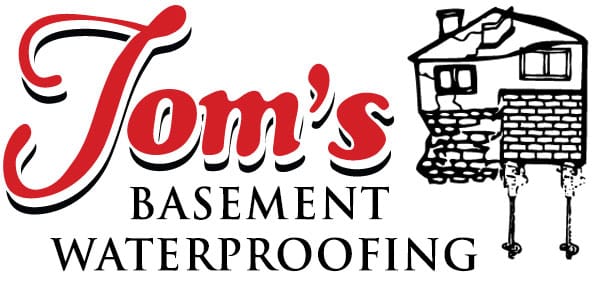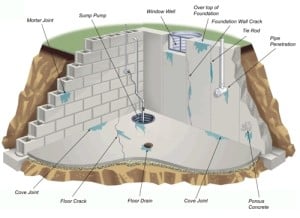There are several common misconceptions about basement waterproofing. Here at Tom’s Basement Waterproofing, we want to clear everything up, so that you are well informed! When you’re looking into a new basement waterproofing system, to keep your walls and foundation dry, you’ll notice that there isn’t just one system that works for everyone. Let’s go over the two most common and general forms of basement waterproofing, in order to help you understand which system will be right for you and your home.
Exterior Basement Waterproofing
Many companies use exterior waterproofing as their go to method of complete waterproofing. It’s incredibly effective when keeping the water out of your home, but is also incredibly daunting. First, our professional contractors excavate the soil around the foundation of your home, in order to place a retrofit exterior waterproofing structure. This additional work can become costly, especially if you’re having major waterproofing issues. Exterior waterproofing systems are designed to push any excess water down the side of your wall, into a French drainage system that will move the water away from your home. New homes typically now come equip with this new exterior waterproofing system. It’s crucial to understand that exterior waterproofing is not limited to foundation paint, which typically will just limit vapors from entering your home. With waterproofing sheeting and a French drain system, your basement waterproofing system will work more effectively.
Interior Basement Waterproofing
Most interior basement waterproofing system start with the introduction of a sump pump, which moves water that is sitting below the foundation of your home, to move away from your home and not land in your basement. Ideally, most interior basement waterproofing systems create a function for water to not enter your basement, but also a design to remove it, in case it does. Interior basement waterproofing is known to be messy, which is why some people opt out of this method, especially if your basement is finished. Interior systems on your finished walls have to be pulled out, replaced, and cause more work for many homeowners. However, for minor basement waterproofing issues, many people stick with interior basement waterproofing for cost purposes.
While basement waterproofing has several different methods of conduction, they all have the same goal: keeping your home dry. It’s crucial for you to weigh all the options when it comes to basement waterproofing, to find which method is perfect for you. If you call Tom’s Basement today, we can offer a full inspection, to help you make the right decision for you and your home. Don’t let water sit in your basement, call the professionals now! (586) 776-7270

